Honey mushrooms are a regular fall wild edible mushroom that often fruits in massive colonies. When you come across the honey mushroom, you may find you have more than you know what to do with! Honies have an earthy, distinctive flavor that makes them one of the best fall mushrooms you can find—if you’re quick enough to catch them. These mushrooms have a fairly short harvest window, so you might miss them if you’re just a few days late.
Honey mushrooms are dense, cook up well in a large variety of dishes, and add a distinct earthiness and texture. They’re one of the most widely foraged mushrooms across the globe because they are so good to eat, but also because they are often super plentiful.

These mushrooms have the potential for causing extreme gastrointestinal distress if not prepared properly, so make sure to pay attention to the cooking instructions. This is not a mushroom you want to undercook!
Identifying the honey mushroom is not always straightforward. There are some complicated lookalikes, but once you learn the differences, it becomes easier to pick out the honeys. In general, this is not a mushroom for beginner foragers. Though in many places here and around the world, this is one of the first mushrooms a person learns. That is simply because they are so common, grow so profusely, and are pretty reliable about showing up every year. Honey mushrooms are not cultivated; currently, they can only be wild foraged.
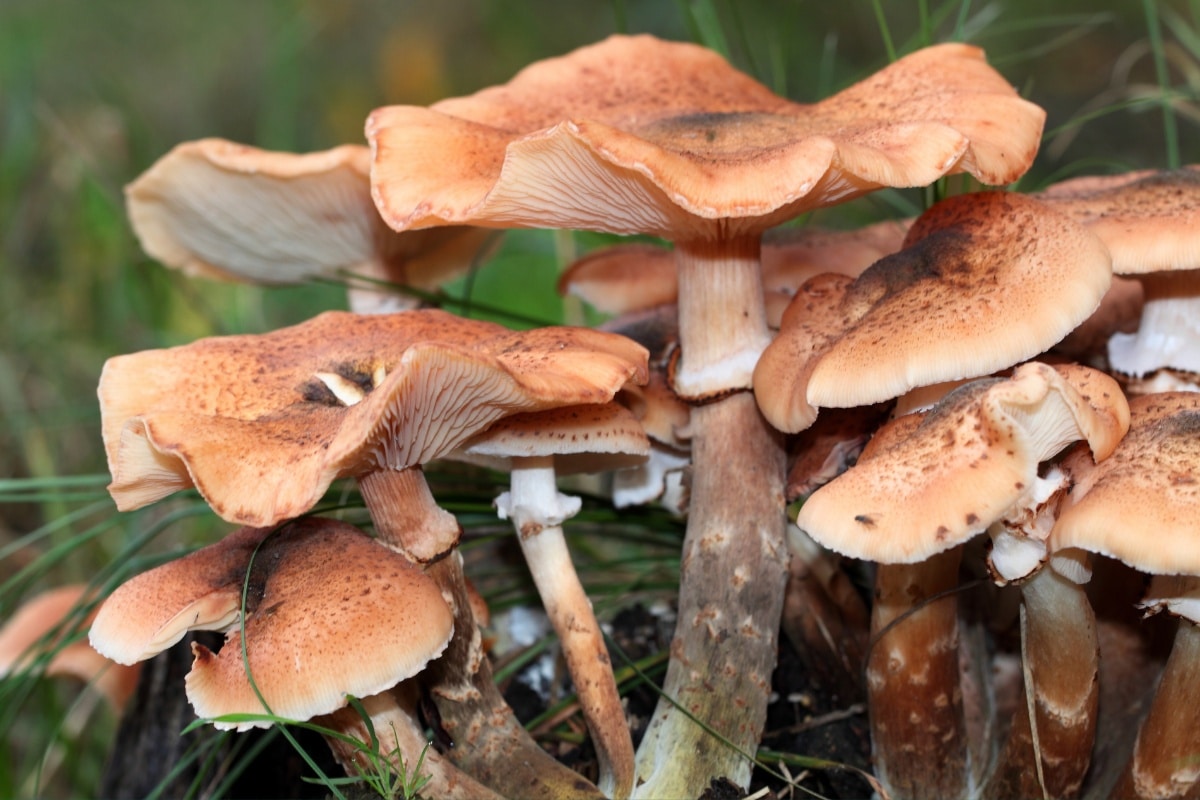
** In some cultures, another type of mushroom is also commonly referred to as a honey mushroom because of the color of it’s cap. The Black Poplar mushroom (Agrocybe aegerita aka Cyclocybe aegerita), also known as Velvet Pioppino or chestnut mushroom looks quite a bit like the wild honey mushroom. They have similar colored caps, long stems, rings around the stem, and grow in dense clusters. Black Poplar mushrooms are widely cultivated, especially in Asian countries, and are becoming popular around the world.
Jump to:
- What Are Honey Mushrooms
- Two For One: Honey Mushrooms’ Role In Creating Another Incredible Edible Mushroom
- Where To Get The Honey Mushroom
- How To Choose Honey Mushrooms
- How To Store Honey Mushrooms In The Short Term
- How To Clean Honey Mushrooms
- How to Cook Honey Mushrooms
- How To Preserve Honey Mushrooms
- Common Questions About Preparing The Honey Mushroom
What Are Honey Mushrooms
Honey mushrooms (Armillaria species) are a complex group with multiple species. And, their identification needs to be spot-on before anyone thinks about eating them. When people talk about foraging or eating the honey mushroom, they could be referring to one of several species that occur in North America. In general, though, the top two most widely foraged species are
- Honey Mushroom (Armillaria mellea)
- Ringless Honey Mushroom (Armillaria tabescens syn. Desarmillaria tabescens)
The cap of the honey mushroom is between 2 to 6 inches across and usually honey-yellow to reddish-brown. The center of the cap is commonly darker than the rest of the cap, which is a key identifier. The cap center has densely concentrated fine black hairs covering it. Each cap begins as a tiny round button that grows and flattens as it ages. With age, the edges of the cap also usually turn wavy.
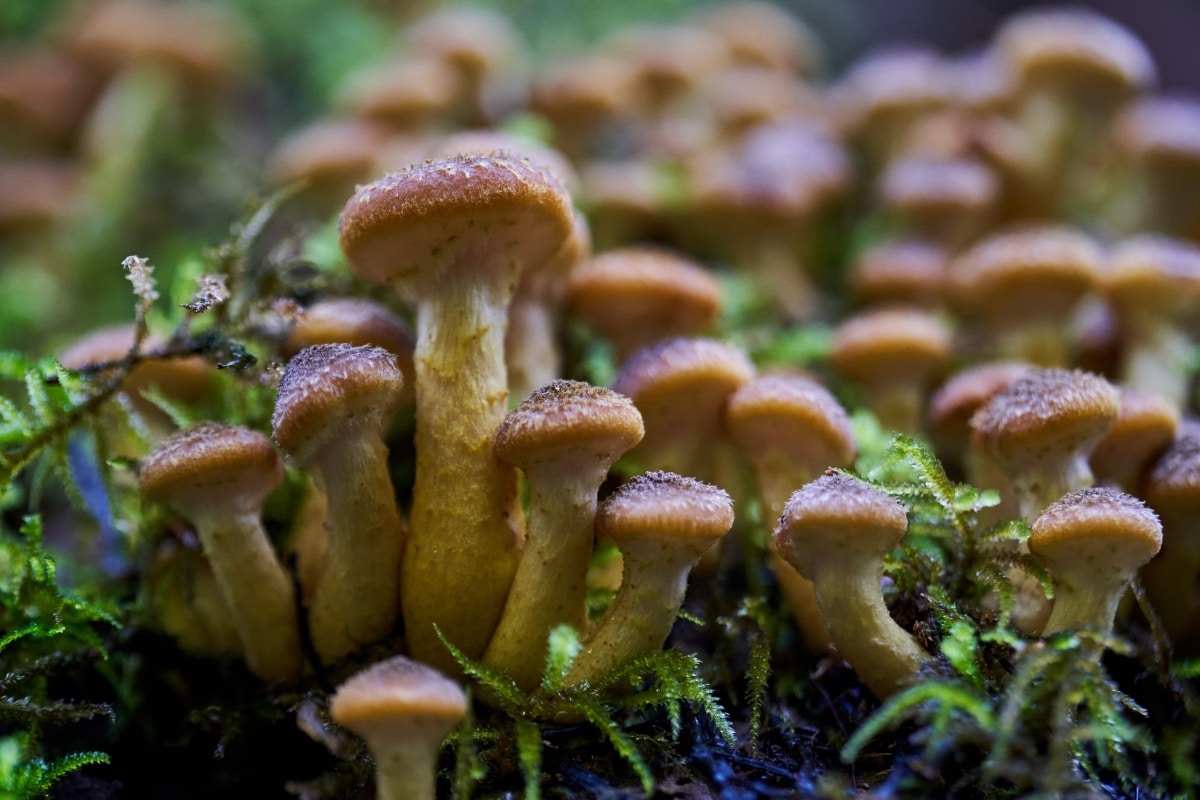
The gills of the honey mushroom are covered by a pale yellow veil when it is very young. With age, the veil breaks and leaves a ring around the upper portion of the stem (except for the ringless honey mushroom, which doesn’t do this at all). The gills of the young mushrooms are white but darken over time. They may also form rusty spots when mature. These gills attach broadly to the stem (adnate) and sometimes run down it slightly (decurrent).
These mushrooms always have a white spore print. They grow in very dense, tight clusters with many mushrooms sprouting from one base. Honey mushrooms grow on dead or dying trees, stumps, and buried wood roots. They might seem to grow straight from the soil, but they always connect to wood underneath.
For more about identifying and foraging honey mushrooms, as well as important information about lookalikes, check out our guide: Honey Mushrooms: Identification and Foraging Guide
Fun Fact: The largest living organism (possibly up for debate, but at least one of the largest living organisms) is a honey mushroom colony in Malheur Forest in Oregon. This single honey mushroom, nicknamed “The Humungous Fungus,” spreads across 2,385 acres!
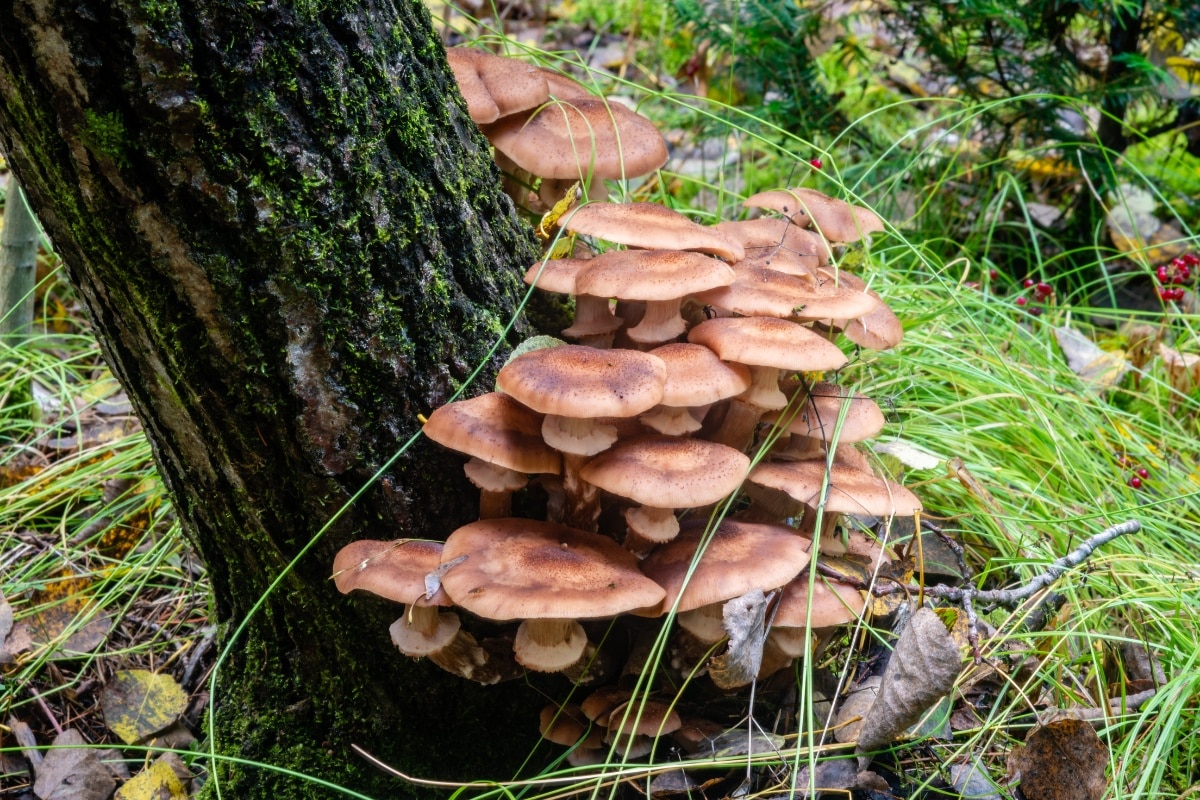
Two For One: Honey Mushrooms’ Role In Creating Another Incredible Edible Mushroom
While you’re out hunting honey mushrooms, you might get really super lucky and actually be able to forage two amazing edible mushrooms at once. When honey mushrooms get parasitized by the fungal pathogen Entoloma abortivum, they honey mushrooms are transformed into the weird, lumpy, white shrimp of the woods. To many foragers, shrimp of the woods is significantly better than the original honey mushroom and a much better foraging find.
Entoloma abortivum is a fungus that can live in two ways. It can attach to honey mushrooms (all the species, not just one) when they are around. If there are no honey mushrooms, it helps break down dead plants in the forest. When the parasitization happens, the Entoloma literally takes over the honey mushroom host and turns it into something completely unrecognizable as originally being a honey mushroom to start with.
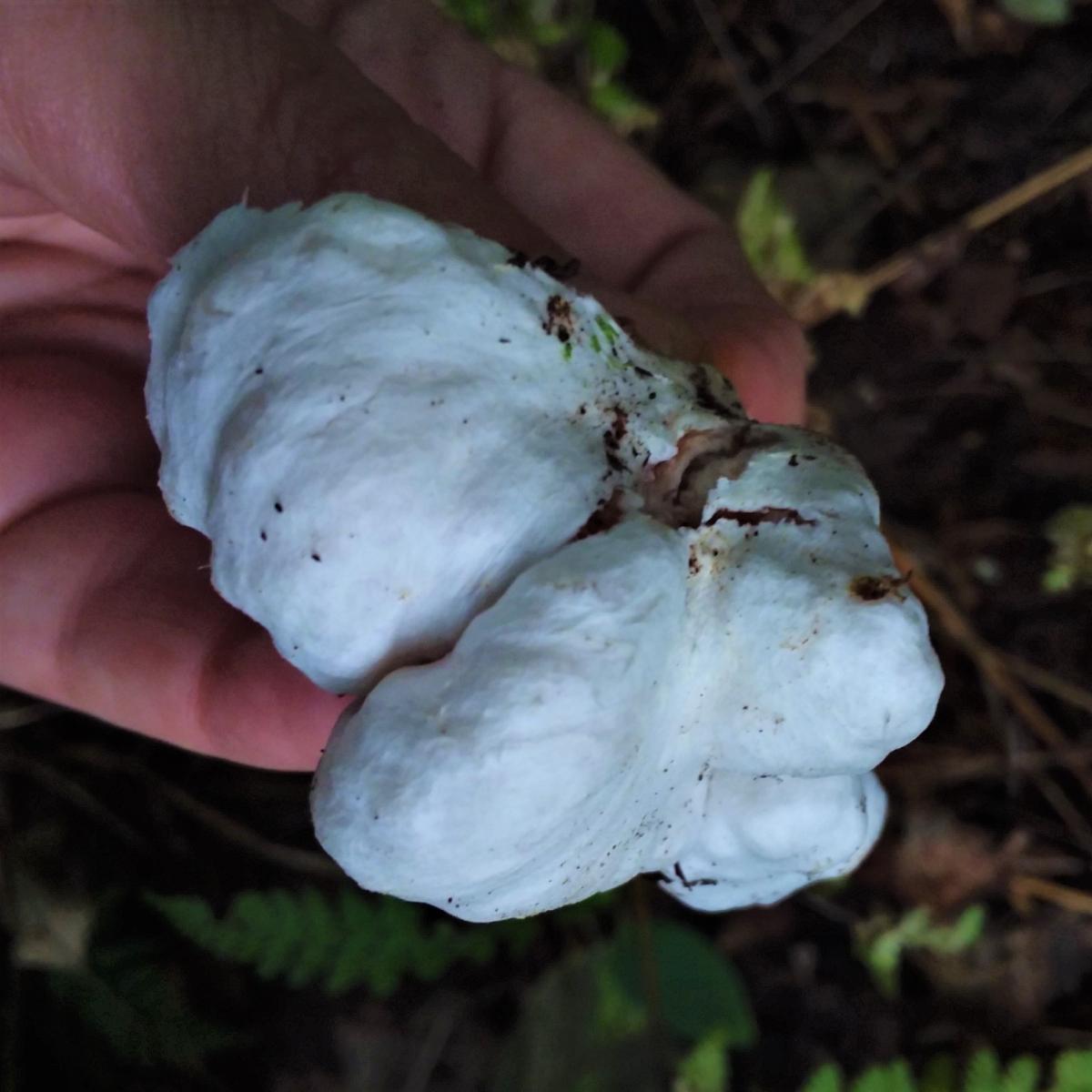
Usually, you will find the still gilled “normal” honey mushrooms alongside or nearby the white shrimp of the woods. The parasite is very practical and rarely infects an entire patch of honey mushrooms. So, you will find them side by side, and sometimes, specimens in the process of being transformed, malformed, or only partially parasitized – white lumps that still have a hint of gills and other honey mushroom features.
The process is almost unbelievable, but Mother Nature is full of surprises, and this is a great one. If you see lumpy, white blobs near honey mushroom patches, don’t pass them by! And, if you find honey mushroom fruitings, always look for the white shrimps, with your fingers crossed.
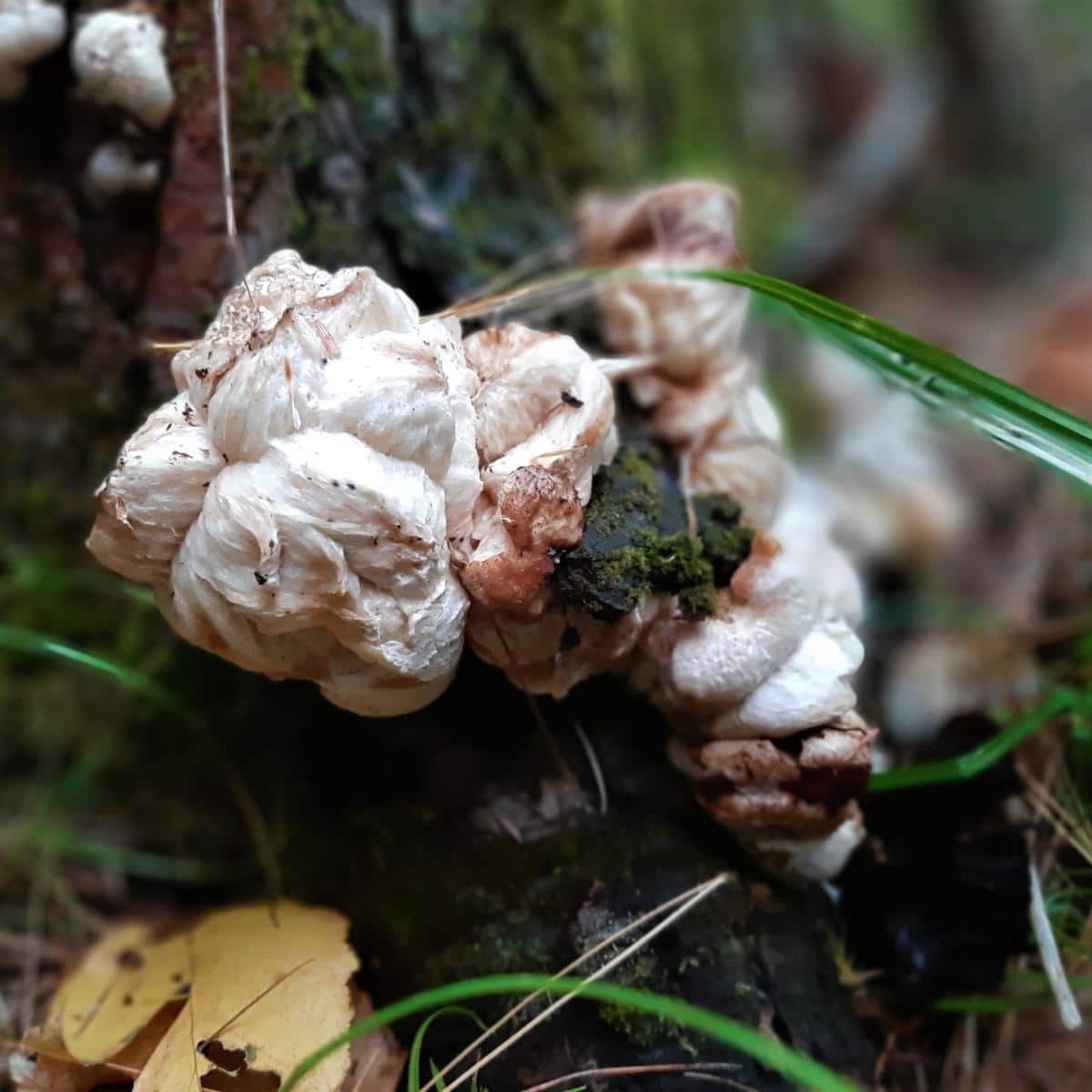
Where To Get The Honey Mushroom
The honey mushroom is only available wild foraged. It cannot be reliably cultivated (yet). Many people have tried with mixed results; usually, nothing happens. There are places that sell honey mushroom spawn so you can give it a try at home, but don’t get your hopes up for any significant results.
During honey mushroom season (mid-late autumn), you may be able to find honey mushrooms at your local farmer’s market or specialty store. However, it’s really not common to see them for sale. One reason is that they have a high probability of stomach upset if not prepared correctly. Another reason is the potential for confusion with toxic lookalikes, which makes many markets hesitate to allow them.
An awesome thing about honey mushrooms is that they reappear in the same locations, often every year. A lot depends on the weather and climate, particularly rainfall, but they are known to show up most years on the same trees or stumps. In banner years, the woods literally explode with honey mushrooms, and you’ll have more than you ever dreamed of in your entire life!
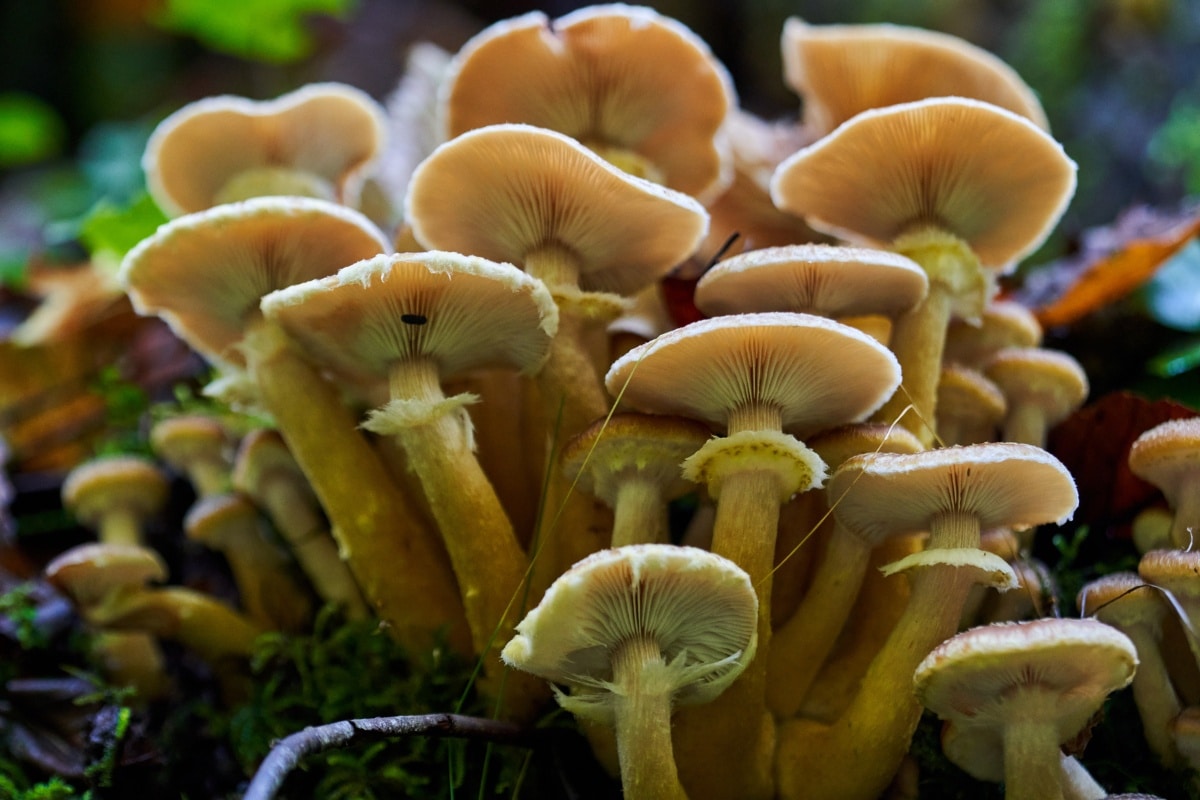
How To Choose Honey Mushrooms
Before we get into how to pick the best honey mushrooms, some foraging myths need to be cleared up. People often say that fully opened honey mushroom caps might make you sick, while closed buttons are safe. This isn’t true at all. The mushroom’s age or the openness of its cap doesn’t affect whether you can eat it. What matters is how fresh, healthy-looking, and bug-free the mushroom is.
Timing is everything when foraging for the honey mushroom. They grow fast and furious and decay quickly. If you see them in the woods and they look good, don’t wait to harvest. In a day or so, they’ll be bug-filled and inedible.
The best honey mushroom specimens are young and firm. They have small caps that feel crisp and bouncy – similar to the look and feel of button mushrooms you get at the grocery store. Younger mushrooms are also much less likely to be overrun with bugs and larvae, which also makes them better picking.

The texture of the caps matters more than the stems when you’re picking these mushrooms. The stems are usually discarded as they can get tough or be too fibrous. Many people do use the stems, chopped up small, but the caps are the main draw. And, usually, when harvesting honey mushrooms, there is such an abundance that you don’t have to stress about wasting anything.
Honey mushrooms with small caps measuring 1-4 inches across taste better and have better texture than fully grown ones. With age, the caps go from firm to spongy. The younger mushrooms stay tender, even with cooking, and you’ll find fewer bugs and larvae in them.
The best quality mushrooms still have their cottony partial veil connecting the cap’s edge to the stem. With age, that veil breaks, and that is a sign the mushroom is moving into its mature stage. Harvesting honey mushrooms when they still have their veil means you’re getting super young, fresh, and (most likely) firm specimens.
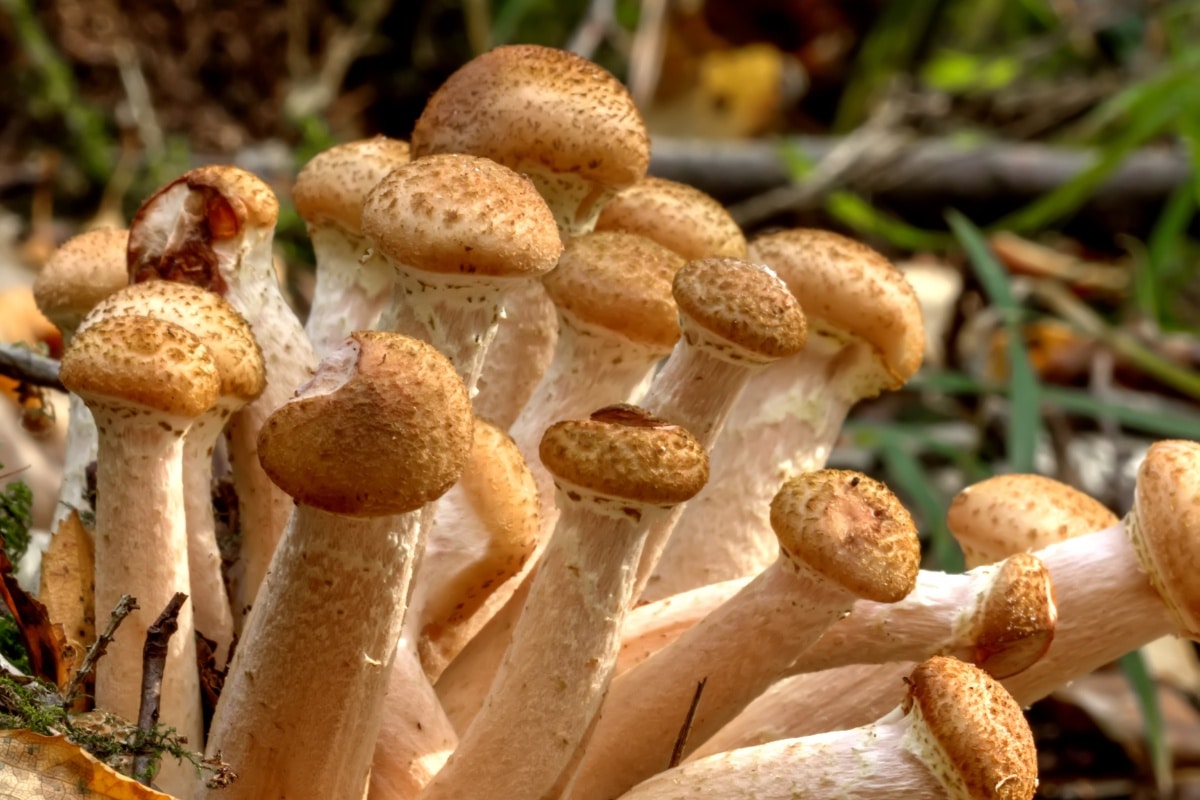
This mushroom’s quality drops by a lot as it ages. The caps open up, become flat, and the underside becomes much more accessible and attractive to all the hungry bugs, slugs, and wildlife. It’s very common to find almost hollowed-out honeys because the insects have devoured them from the inside. Of course, these should be left in the forest.
Mature honey mushrooms have larger caps, which is appealing (like a portabello mushroom) for the dinner table, but make sure you check the status of the cap flesh before foraging them. If the cap is ultra squishy or soft, it’s not going to be great to eat. Or, it’s going to be so full of larvae that it affects the mushrooms’ flavor.
The bigger ones might have a softer texture, but they’re still good to eat if they’re bug-free and fresh-looking and smelling. Don’t pass them by just because the caps are large, but be vigilant in checking for bugs and overall condition. A bug-free dinner plate-sized honey mushroom is an excellent foraging find.
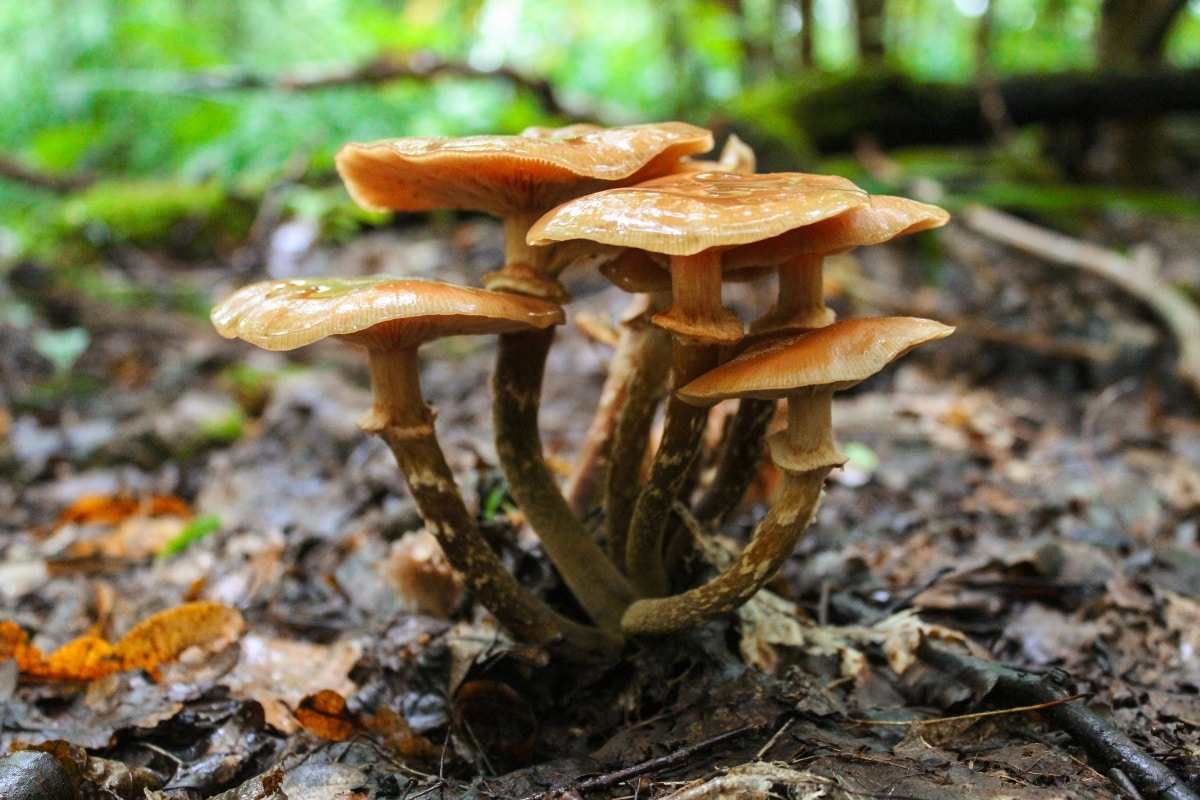
Look underneath the cap, too, at the gills. Often, the bug situation is easy to see there. A great way to check the condition of the cap flesh without cutting the cap is to cut the stem off at the point where it meets the underside. If you see lots of bug holes in the stem right there, the cap flesh will be in the same situation.
The entire mushroom cluster will start to show clear signs of deterioration over time. Usually, the caps get slimy and start to decompose into a melted-looking mass; often, you find these old clusters as completely deflated, wet, and slimy blobs on the ground. Or, in really dry to the point of drought years, the mushrooms with be shriveled and crunchy – not worth foraging at all, either way.
What To Look For:
- Firm, dense flesh
- Button mushroom appearance (cap is still bell-shaped)
- Presence of a partial veil
- No sliminess or obvious decomposition
- No bugs or larvae


How To Store Honey Mushrooms In The Short Term
These mushrooms spoil quickly, so you should plan on using them very soon after you collect them. Honey mushrooms can be refrigerated in the short term, but plan on using them within a couple of days. Unfortunately, they start to get mushy quickly.
Do not wash the mushrooms before putting them in the refrigerator. This speeds up their decomposition. Clean the mushrooms by removing forest debris, trimming the stem bottoms, and cutting away insect damage.
To store them in the refrigerator, put them in a brown paper bag. Paper helps absorb extra moisture and prevents early spoilage. You can also wrap them in paper towels and place them in a refrigerator bowl. This may dry them out, but it is a short-term alternative for when no paper bags are available.
Do not ever store honey mushrooms in plastic. Plastic retains moisture, and this makes the mushrooms decay quicker.
The quality of honey mushrooms drops quickly, even with proper storage. Most experts suggest processing your harvest immediately instead of relying on long-term refrigeration. Refrigeration works as a temporary fix until you can cook, freeze, or preserve your honey mushroom harvest properly.
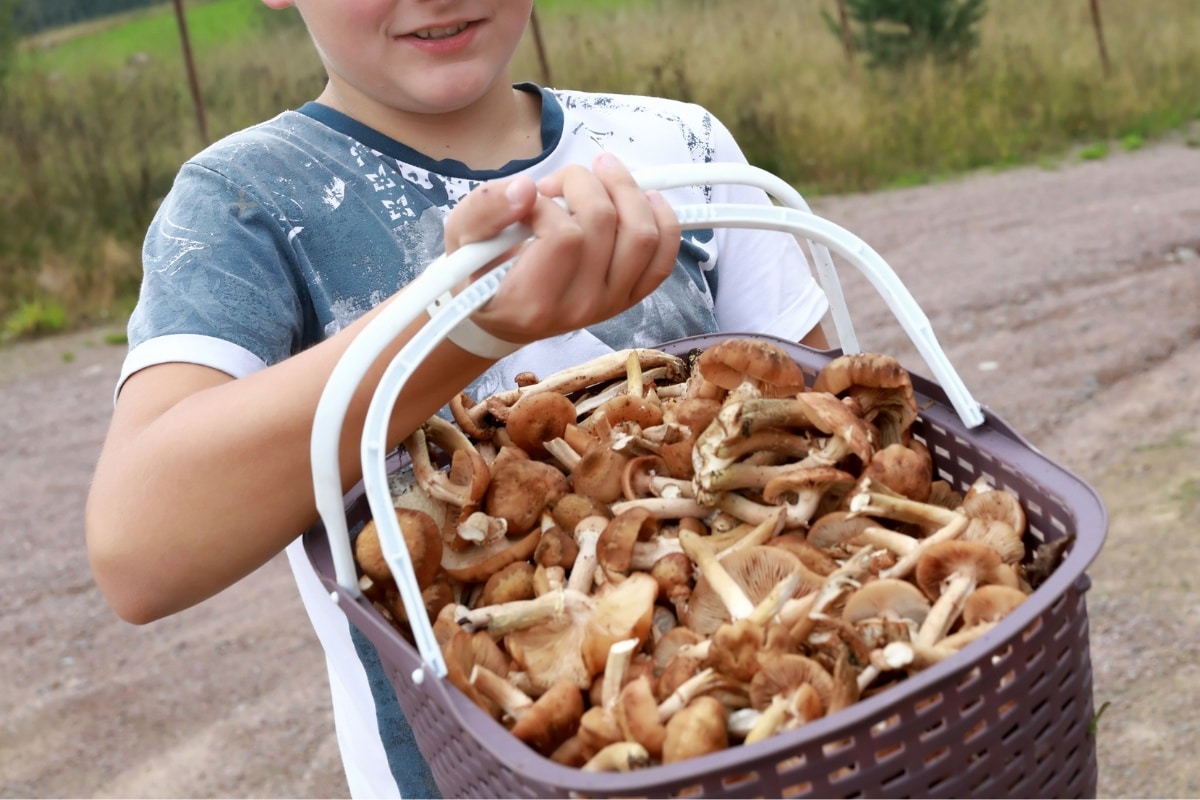
How To Clean Honey Mushrooms
Start by checking your harvest carefully. Good caps should look clean, feel a bit firm, and smell nice. Stay away from any mushrooms that smell odd or show signs of mold near the gills or decomposition anywhere. When honey mushrooms start to deteriorate, their caps get squishy and soft, or they get dried out and crisp around the edges (depending on the weather).
Always check for bug damage. All the insects and wildlife love honey mushrooms, and it can be very frustrating to remove them all. Any mushrooms that are crumbling, have tons of little holes in the flesh, or are covered in bugs should be discarded. These are not going to turn out okay.
As with all mushrooms, there is often a lot of debate over whether to soak them to get rid of bugs and dirt, or just rinse them off or brush them off. Honey mushrooms will absorb a lot of water if soaked for too long. If you are planning on dry sauteing your mushrooms (a common and one of our favorite methods), then soaking makes no difference.
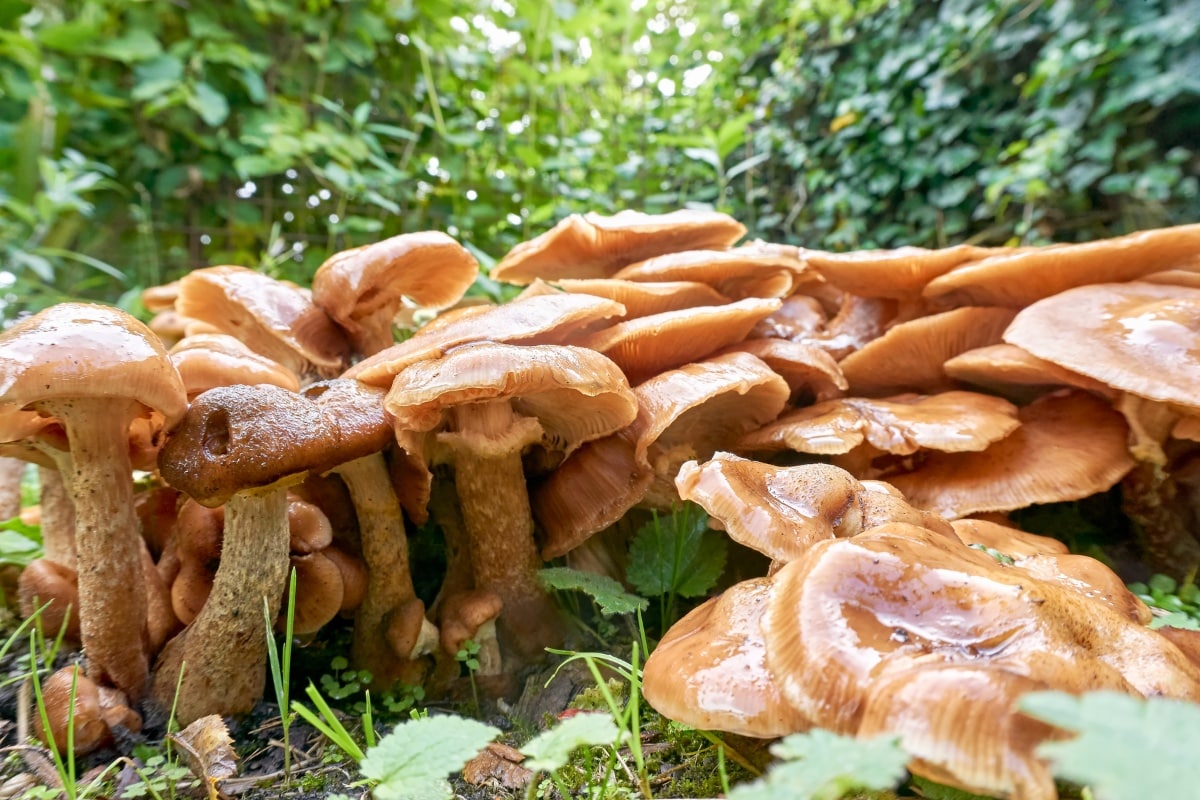
If you are using a different cooking method, then you want to avoid soaking them as much as possible. Usually, a quick rinse under running water is sufficient to wipe off dirt or bugs. You can use a soft cloth or your hands to rub off any stuck-on bits. Dry the mushrooms on a cloth towel for a little while after cleaning and before cooking.
For particularly hardy bugs that aren’t leaving on their own, you can do a quick saltwater bath. Mix a couple of tablespoons of salt in water and let the mushrooms soak for 5-10 minutes. Don’t soak them longer or they’ll get mushy. Rinse off the mushrooms after taking them out of the salt water bath, and then lay them out to air dry for a little while.
Stems
Young button mushrooms are tender enough to use whole – leave the stem and it’ll be great. You might want to trim it a little bit at the end, where it can be a bit tougher. Some people discard all stems, and that’s fine. It’s up to you, but they are edible and good, especially when the mushroom is younger.
The stems get tougher as they grow bigger. They turn fibrous, especially the outer stem layer, and aren’t as good to eat on their own. Don’t be daunted, though. They’re still edible. Peeling the bigger stems fixes a lot of the texture issues, though they still won’t be as tender as the cap.
A vegetable peeler works great for peeling the stems; it’s a lot like peeling asparagus. If you don’t have a peeler, you can pull the outer layer off by hand, just like string cheese.
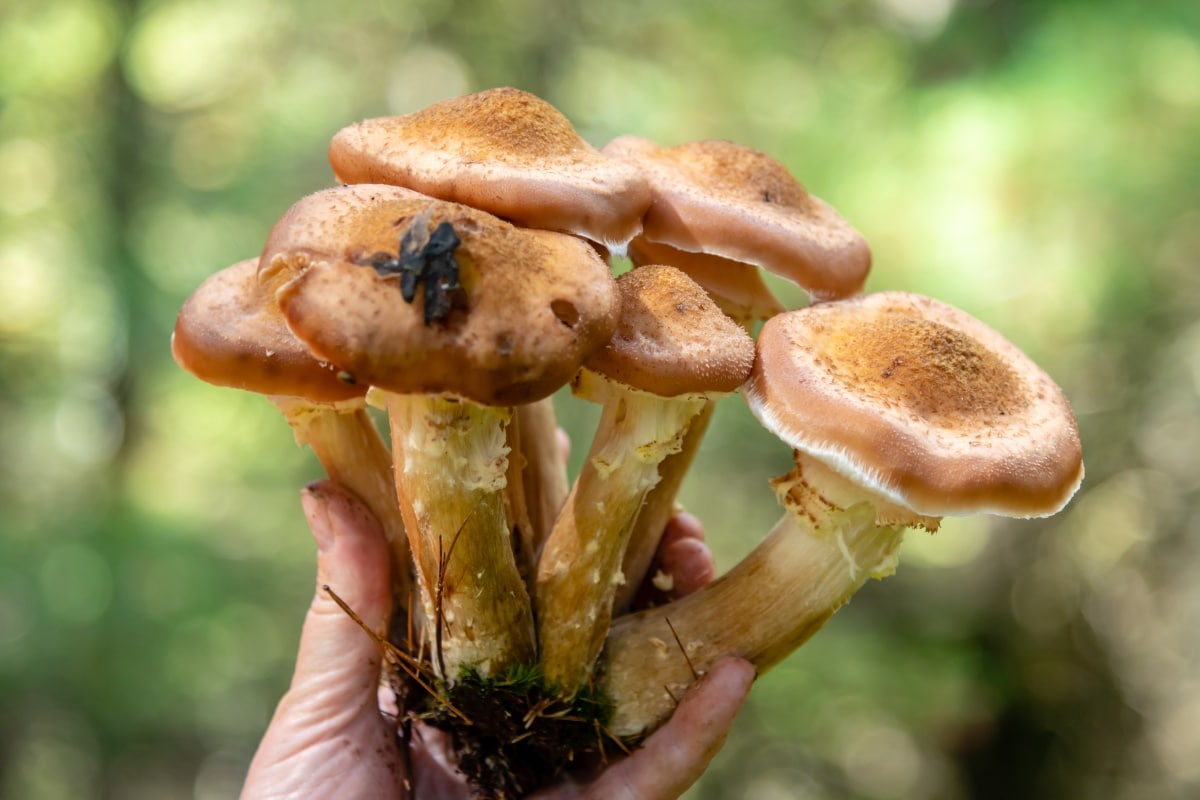
How to Cook Honey Mushrooms
You must cook honey mushrooms completely before eating them. These fungi contain compounds that can upset your stomach if you don’t cook them properly. Most mycologists say you should cook them for at least 15 minutes to avoid any stomach problems. Many mycological societies won’t even serve these mushrooms at their events because some people might be sensitive to them.
A small percentage of people might still have stomach issues even if the mushrooms are cooked well and thoroughly, so you should try just a small amount the first time. This should be done with every new mushroom, actually. Only and always try a small amount, then wait 24 hours, to see if you’re sensitive to the new mushroom.
Honey mushrooms grow in tight clusters that are best broken apart before cooking. Breaking them into single mushrooms or similar-sized pieces helps them cook at the same speed.
Honey mushrooms have a light, earthy, slightly nutty flavor. They’re not that strongly flavored, but it is noticeable. Their main draw is their texture, especially when young, which is firm and holds up really well to cooking.
These mushrooms really soak up flavors. They taste great with garlic, herbs like thyme or parsley, and a bit of butter. You can use this mushroom in any recipe that calls for button or cremini mushrooms. Substitute them 1:1.
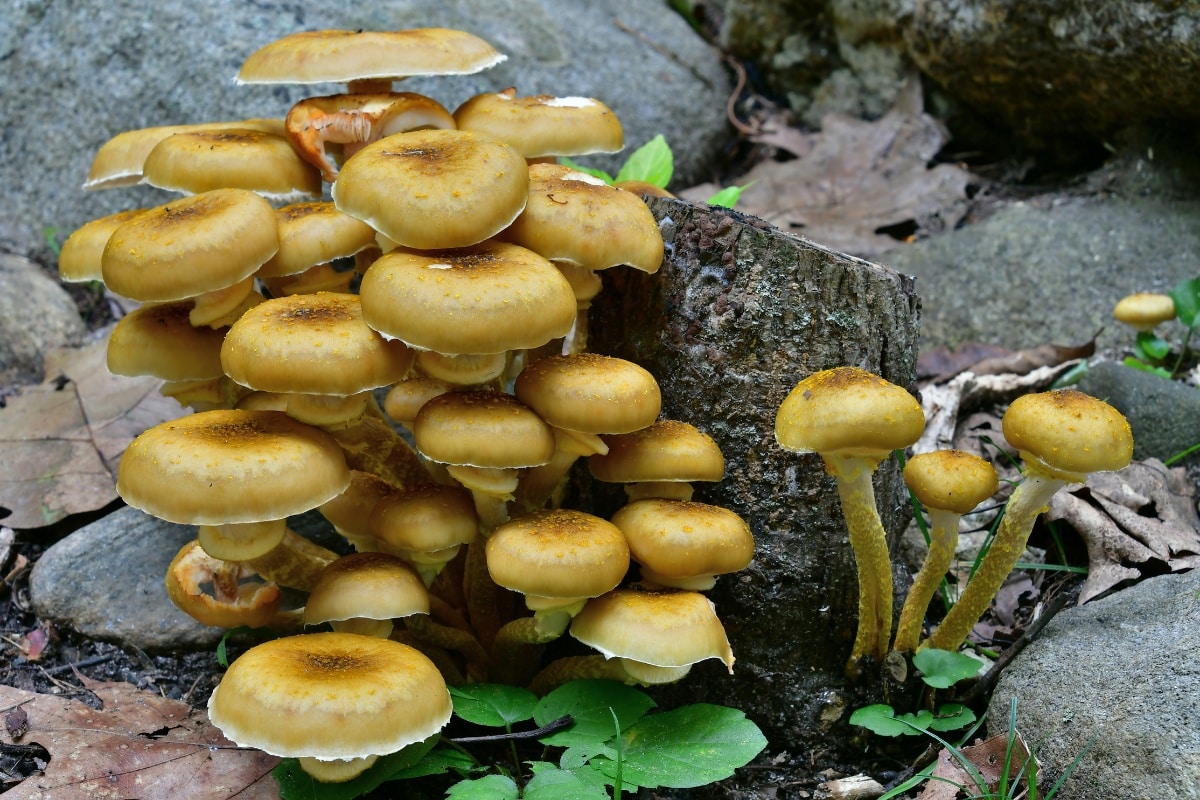
Start With A Boil
This isn’t essential, but it is highly recommended due to the propensity of these mushrooms to cause gastrointestinal distress. Boiling the mushrooms neutralizes compounds that could upset your stomach. It also changes the texture of the mushrooms, though not in a terribly bad way, but it will be different from a sauté.
The first time you prepare these mushrooms, we suggest boiling them first before the cooking preparation. If your stomach is fine with that, then go ahead and try skipping the boiling step. Or not. The risk factor is up to you.
Boil the mushrooms in salted water for 10-15 minutes. Drain and rinse them and then add them to your dish.
Managing Mucilage
Honey mushrooms release a slime-like substance called mucilage when they’re in liquid, like okra does. This makes them great for thickening soups and stews. But, for many, it’s not a desired trait. You can reduce the mucilage by blanching them in salted water before using them in other recipes. If you’re using the boil first method, just make sure you add salt to the water, and that will take care of it. And, drain and rinse them after cooking.
Ways To Use The Stems
The stems are good to eat if they’re still tender and bug-free. With age, the stems get pretty fibrous and often incredibly buggy and not great to eat on their own. If the stems look good, cook them up with the rest of the mushrooms.
If the stems are tough but bug-free, they can be used in stocks or broths where the texture doesn’t matter. Or, they can be dehydrated and used as a mushroom powder to thicken stews.
Our Favorite Honey Mushroom Recipes:
- Pickled Honey Mushrooms
- Honey Mushroom Pierogis
- Marinated Honey Mushrooms
- Slow-Cooked Honey Mushrooms and Entolomas
- Honey Mushroom Paprikas
- Creamy Hungarian Mushroom Soup
- Spicy Honey Mushroom Relish/Honey Mushroom Salad
- Refrigerator Dill Honey Mushroom Pickles

How To Preserve Honey Mushrooms
You might end up with lots of honey mushrooms after a good foraging trip. Here are several ways to make them last longer than a week.
Boiling and Freezing
The quickest way to keep honey mushrooms fresh is to boil and freeze them. Start by bringing lightly salted water to a rolling boil and cook the mushrooms for 8-10 minutes until they wilt. Drain them and rinse them under cold water. Let them cool and dry on a tray before vacuum sealing in 8-16 oz portions. People in Eastern Europe use this method a lot since these mushrooms are a staple in their diet.
Dehydrating
Dried honey mushrooms can last for years as a handy pantry ingredient. You cook them before dehydrating, and then they’ll be ready to use immediately without any additional cooking. Or, you can dehydrate them raw; just remember that they still need to be cooked thoroughly. Dehydrating is not a sufficient amount of heat to cook them.
Cut the caps and dry them at 125°F for about 4-8 hours until they become crisp like potato chips. They should snap like a cracker – any bend means they’re not dry enough and might get moldy. Keep them in airtight containers. You can grind them in a coffee grinder to add more flavor to soups without extra bulk.
Pickling
Young button caps are great for pickling. They hold up well to the pickling process and retain their mostly firm texture. They’re very much like pickled button mushrooms.
Cooking and Freezing
You can prepare the these mushrooms in a recipe and then preserve the entire dish. Raw mushrooms turn mushy and watery after freezing, so don’t freeze these raw. The mushrooms hold up well when re-heated from frozen as long as they’ve been cooked first. A duxelles (mushrooms, onions, and garlic mixed together) is a great idea and freezes well.
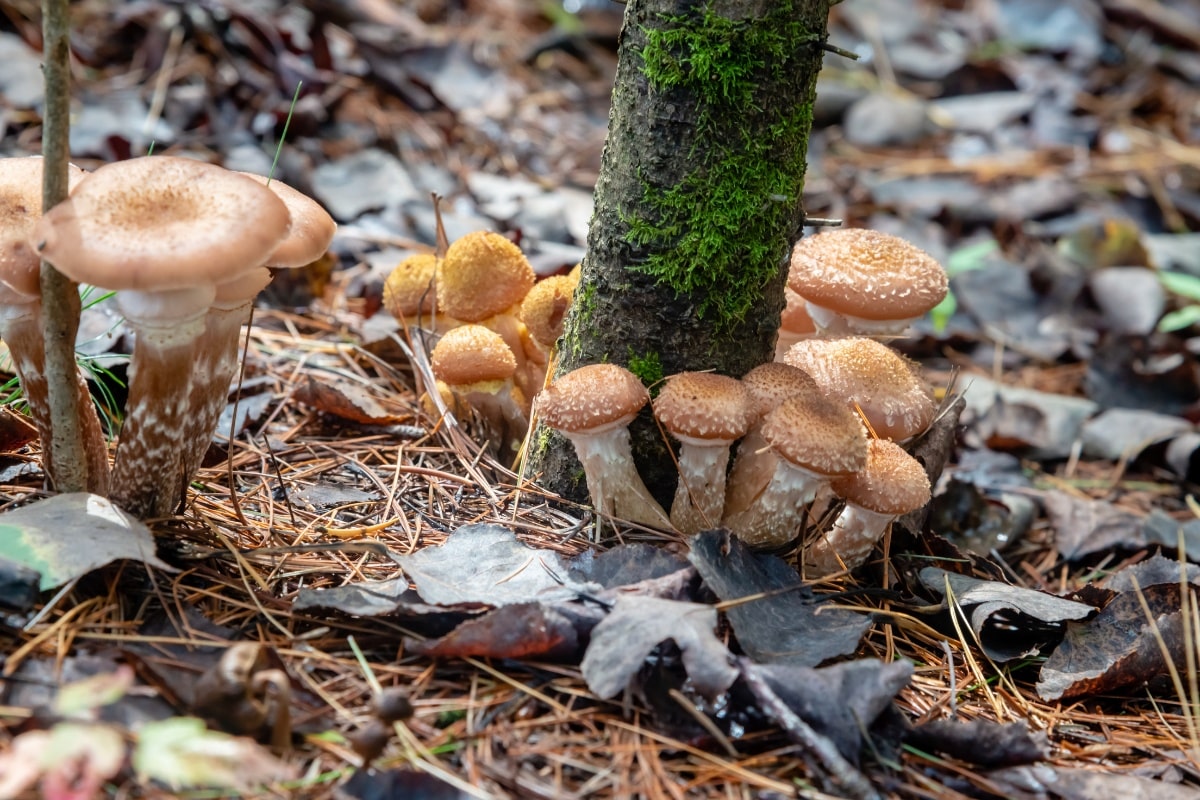
Common Questions About Preparing The Honey Mushroom
Are honey mushrooms safe to eat?
Yes, honey mushrooms are safe to eat but only when properly and thoroughly cooked. They must be cooked for at least 15 minutes to eliminate compounds that can cause digestive upset. Try a small amount to start with, as some people may experience sensitivity even after they’ve been properly prepared.
How do I identify honey mushrooms?
Honey mushrooms grow in dense clusters, have tan to brown to honey colored caps, and whitish gills. They typically grow on dead or dying trees and have a ring around the stem (except for ringless varieties).
How long can I store fresh honey mushrooms?
Fresh honey mushrooms can be stored in the refrigerator for up to one week when placed in a brown paper bag or wrapped in paper towels. Do not store them in sealed plastic containers or plastic bags because this traps moisture and accelerates spoilage.
What are some ways to preserve honey mushrooms for later use?
Honey mushrooms can be preserved through boiling and freezing, dehydrating for soups and stews, or pickling for long-term storage. The boil-and-freeze method is particularly reliable, while dehydrating creates a versatile ingredient that can last for years when properly stored.

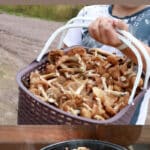
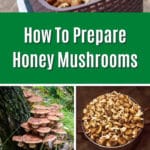

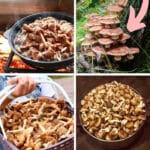

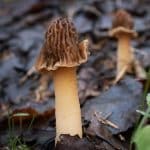
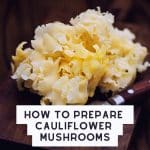
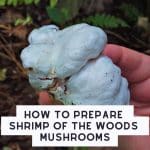
Rocke says
Hey, fantastic resource. Thank you for putting all this great information out there. I’m an amateur shroomer for sure. Been harvesting mushrooms for years, but only the safe easy ones to identify. Always wanted to move on to honeys. Our forest is absolutely covered in what I think are honeys in the fall. I need to bring in our local big guns, the Ukrainians, who are a fantastic resource for me. They will help confirm and ID these. Hopefully next year.
Does it matter what type of wood/dead tree they honeys grow on? There are certain times, when our forest floor is covered in what looks like massive honey flushes. We mostly have hardwood, and poplars. And a few places that have hemlocks, which is where I find the lovely chanterelles.
Great resource, tks
Jenny says
Thank you! No, it doesn’t matter which tree the honey mushrooms grow on. Having a chanterelle patch is phenomenal!